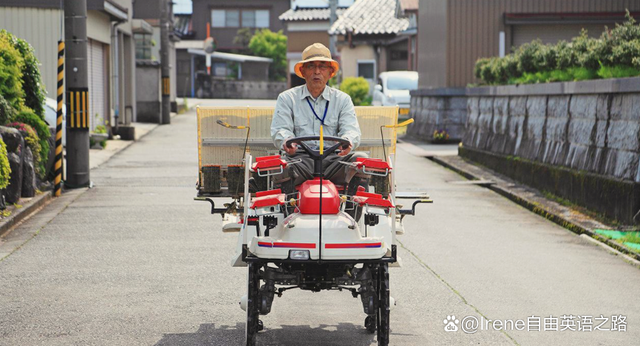《经济学人》:日本城市新规划可以应对人口老龄化问题?
Urban redevelopment IIDumplings and skewersJapanese cities are being retrofitted for an ageing population
The coastal city of Toyama is a global exemplar of “compact living
[Paragraph 1]TOYAMA NESTLES between a deep blue bay and snow-topped peaks, some 250km northwest of Tokyo. In many ways, it is a quintessential regional Japanese city: its residents are greying, its industry is stable but sclerotic, its cuisine is exquisite. American firebombs targeting its steel mills wiped out 99% of Toyama’s centre during the second world war. Afterwards, the city was rapidly rebuilt and sprawled as its population grew. But that was then. Since the 1990s the city of 414,000 (and falling) has been battling the ills of an ageing population: ballooning bills, falling tax revenues and an out-of-date urban plan.

[Paragraph 2]Yet Toyama has battled much better than most—even managing a modest revival.On a new central plaza stands the crown jewel of the renewed Toyama: a cultural complex designed by Kuma Kengo, a star architect, containing an extensive library and a glass art museum.[Paragraph 3]The city has adopted what urban planners call a “compact city” policy. Recognising that sprawl is expensive to build, maintain and service, planners try to make cities smaller, denser and less car-reliant. These aims, long pursued in Europe, are relatively new to Japan. The World Bank calls Toyama “a global role model” for compact cities. [Paragraph 4]Planners there have pursued what they call a “dumpling and skewer” structure, in which denser hubs (the dumplings) are linked by public transport (the skewers). Making it work required first winning over lots of recalcitrant locals. Mori Masashi, who was Toyama’s mayor from 2002 to 2021 and spearheaded the transformation, held hundreds of town hall discussions of the plan. “I had to convince people to think 30 years into the future,” he explains. He also travelled widely to learn from cities as far afield as Amsterdam and Portland.
[Paragraph 5]Thoughtful design helped. The new light rail has carriages that align flush with station platforms, eliminating the steps that can trip up elderly riders. Lest youngsters feel left out, the city also built a skatepark, a rarity in Japan. Such projects made canny use of the city’s existing resources. Old rail tracks were repurposed for the new light rail, a move that reduced costs by 75%, according to the World Bank. While the government handled construction, it farmed the rail network out to an expert private firm. It also offered subsidies to entice people to move into the dumplings.
[Paragraph 6]The policy, though no panacea for the demographic squeeze, changed Toyama’s trajectory. The city arrested the outflow of people from its centre: net migration into the downtown area was negative before 2008 but has since been growing.The new developments have made property more attractive. Land prices in the city centre had been declining by around 2% a year until 2012; in the decade since, they have grown by an average of 2% per year, with gains in some areas reaching as high as 6%. Using increased tax revenue from the revived city centre to support more remote parts of the region is a “basic model for other cities”, says Nitta Hachiro, the governor of the surrounding prefecture, also called Toyama.
[Paragraph 7]The new urban design may have other long-term benefits. Public transport use among those aged 60 and older has more than trebled.
Sakamoto Kazuko, a 73-year-old local, says the new network has made life “more convenient”. She goes out more often than before, using a discount rail pass for the elderly to visit the city centre and stroll while her grandchildren are at school. Small-scale studies show promising results: old folks who stay active by using their discount transit passes need less nursing care than those who do not
.[Paragraph 8]For those living far from the centre, the benefits are less clear. The compact city is a “bubble” which people outside it look on with “cold eyes”, says one 73-year-old shopkeeper in the suburbs. Local governments with ageing, shrinking populations face hard choices about where to keep water and sewers running and where to close schools and clinics. Even as cities strive to become more compact, they may fail to reach the density necessary to keep businesses profitable, says Okata Junichiro, of the University of Tokyo. But they must try. Japanese cities once grew boldly. As the population ages and declines, they must learn to shrink with grace.原文出自:2022年12月24日《TE》Asia版块。
【补充资料】
(来自于网络)富山市(Toyama)位于日本列岛的中心、本州的中央北部,面向日本海,与东京、大阪、名古屋三大都市圈的距离相等,具有得天独厚的地理环境。三面环绕险山峻岭、环抱深水湾的广阔平原不断延伸,由“北阿尔卑斯立山”连峰等山岳地带包围,形成了以富山市为中心、半径为50km的统一连贯的地形,生长植物品种之多位居日本本州岛第一位。水资源丰富,农业和渔业都比较发达,形成了日本海沿岸一带屈指可数的产业集结工业带。由于本地从17世纪就开始发展制药产业,如今的富山市在日本亦有“药都”的别名,除了现今在市区内仍有不少传统的药店,辖内也形成的制药工业的聚落,包括富山化学工业、日产化学、富士制药工业、富士药品多家制药公司都在此设立工厂。
隈研吾,是日本著名建筑师,享有极高的国际声誉,建筑融合古典与现代风格为一体。曾获得国际石造建筑奖、自然木造建筑精神奖等。著有《十宅论》、《负建筑》等作品。
紧凑城市 compact city: 针对城市无序蔓延提出来的城市可持续发展理念模式 ,强调通过 土地资源的混合使 用、密集开发等策略,提高城市土地的利用效率和城市发展的品质。紧凑城市、精明增长、新城市主义是可持续发展代言的当代三大营城理念。“紧凑城市”起源于欧洲,主要是针对当时城市面临的蔓延式发展,强调城市具有边界、高密度开发、混合土地利用、功能复合、步行尺度、社会及文化的多样性。

























